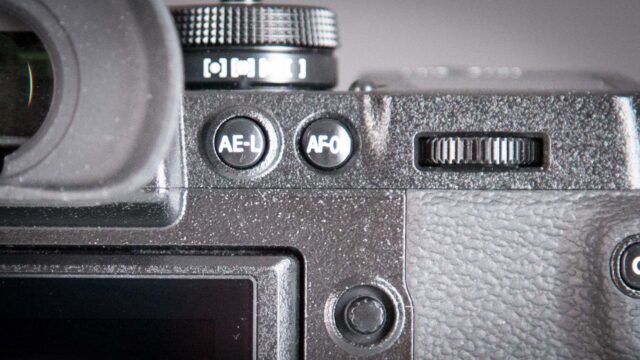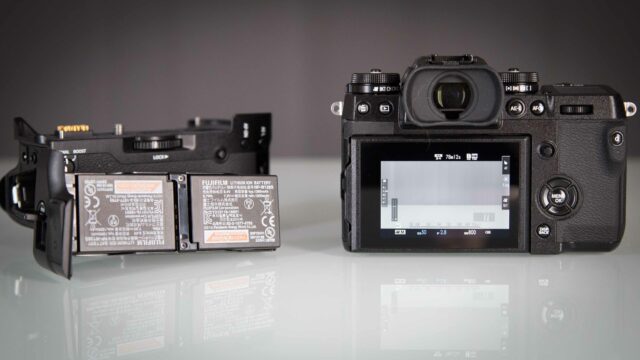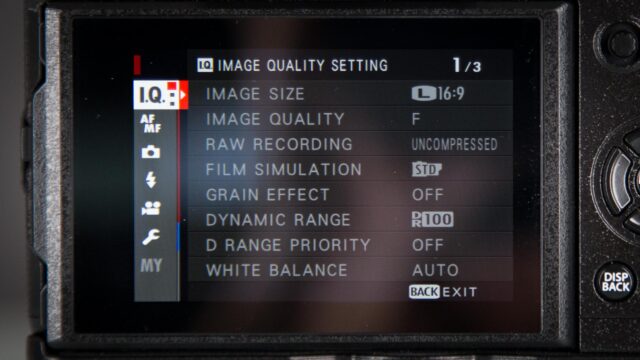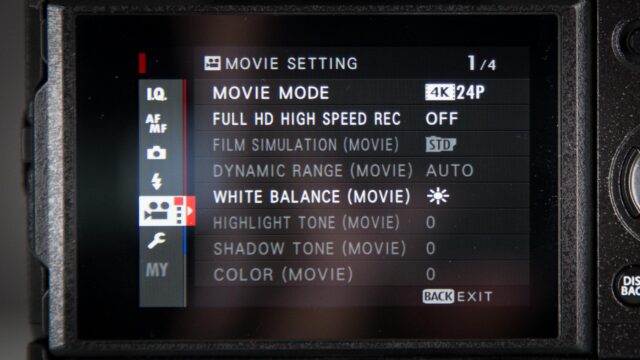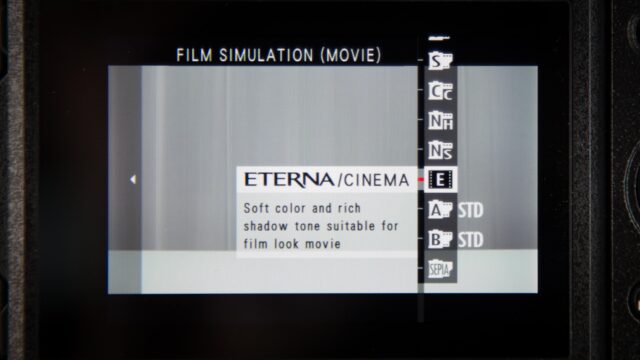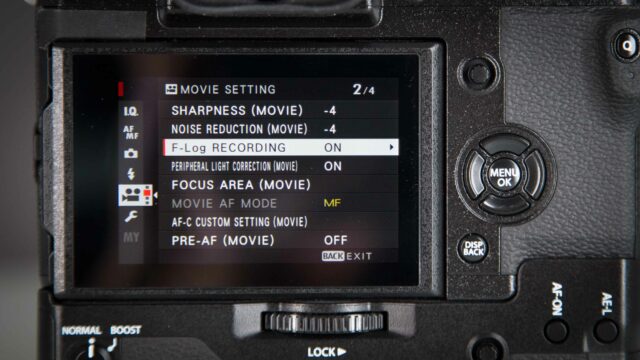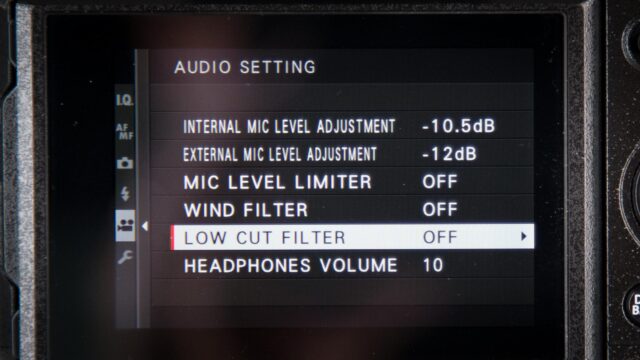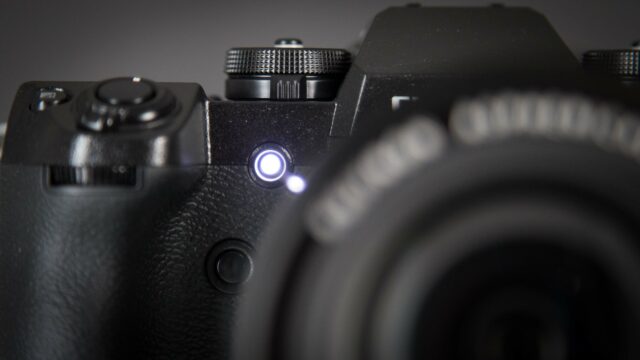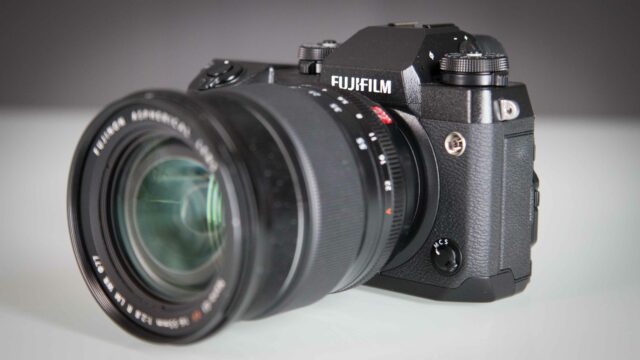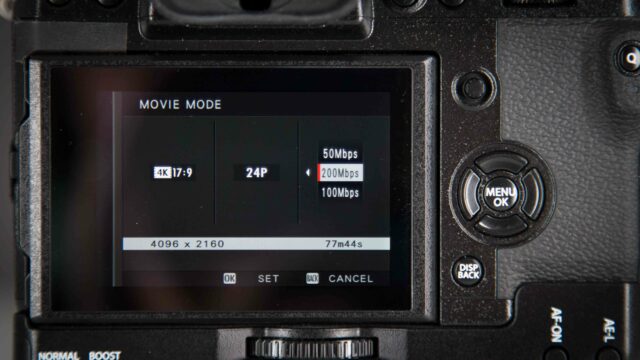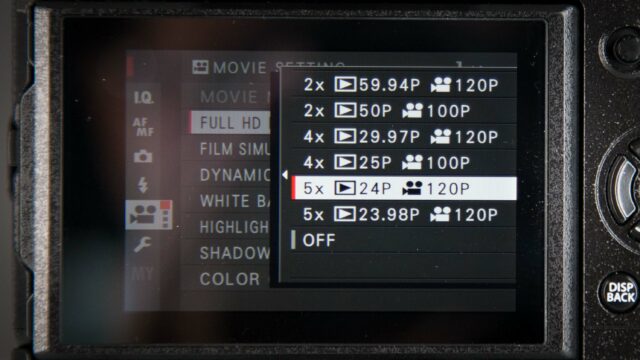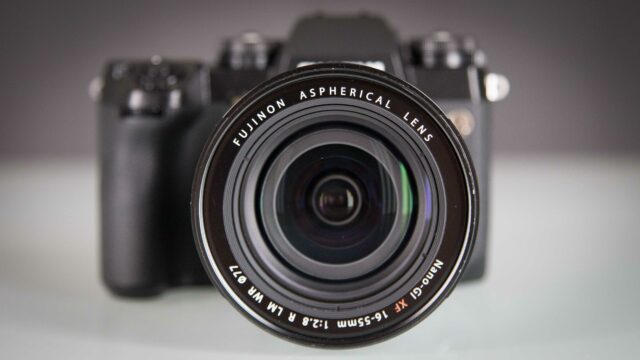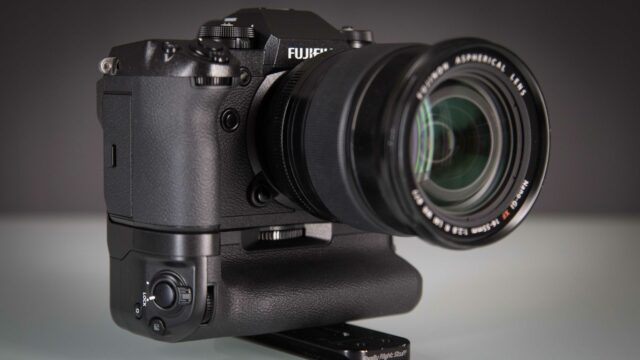FUJIFILM X-H1 Review And Sample Footage
FUJIFILM has just announced its new flagship APS-C sensor size, X mount video-oriented mirrorless photo camera, the X-H1. It’s safe to say that while developing this camera, FUJIFILM had us – the filmmaking community – in mind.
The race to capturing the hearts of filmmakers has just become tougher with the introduction of the new FUJIFILM X-H1. Built on the heritage of the successful FUJIFILM X-T2, this new top-tier camera is rolling out with included additional features that are likely to appeal to many: the 5-axis in-body stabilization system, included F-log and the newly-developed ETERNA film simulation picture profile, just to name a few.
Ergonomics
The new camera felt very robust in my hands and operating it was very similar to using the older X-T2, except for the new AF-ON button – very useful when shooting in manual focus mode and using the EVF: just press this button and get your desired point instantly in focus. The new X-H1 uses a new vertical power booster grip, which I personally like to work with as it adds more stability when holding the camera. Speaking of which: the booster grip also adds additional benefits, like being able to monitor sound via the included headphone socket, support for 3 batteries for longer shooting periods and, last but not least, doubling the total length of the recording time when shooting in 4K, for a total of 30 minutes instead of 15.
FUJIFILM X-H1 Menu
On the menu front, FUJIFILM has done a great job by eliminating (greying out) most if not all of the unnecessary photo-related menu entries when in video mode. As far as I’m concerned, there is just one point that can be improved:
- When wanting to re-adjust a parameter after fiddling with whatever function in the “SET UP” menu, the camera will take you back to the general video menu. This is a bit of an uncomfortable and time-consuming procedure as, at times, one will want to adjust that exact parameter again without starting all over from the main menu.
FUJIFILM X-H1 Video Features
This is the place to mention that the new camera uses the same sensor and processor as the Fujifilm X-T2 but, as the top camera model and in order to differ from the current X-T2, FUJIFILM has added some significant beneficial improvements to the new X-H1. The most notable are:
- 5-axis in-body stabilization system, which worked wonderfully with the tested FUJIFILM XF 16-55mm f2.8 R LM WR lens.
- The inclusion of a built-in F-Log gamma option. This much-anticipated feature will help many with their creative filming and post production work.
- For those who would like to have instant “cinematic” colorful results, FUJIFILM is introducing its newly-developed ETERNA film simulation picture profile. I’ve tried it, I like it, and I’ll be using it whenever there is no time to experiment or go through the process of a color correction session.
On top of the above, it is worth mentioning the Dual SD slots with relay recording functionality, front and rear tally option, the ability to record 120fps in full HD mode, DCI 4K setting (24p only), silent video operation mode (see detailed explanation below in the “Pros” section), good low-light performance and a high data rate recording of up to 200Mbps.
This is also the place to mention a video feature that is not yet functional, but will be next month. I’m talking about the launch of the FUJINON X mount MK lenses. These high-quality, lightweight and compact lenses will be a perfect match for the new camera and besides of benefiting from the 5-axis in-body stabilization system, I’m eagerly waiting to see what else this combo will bring.
Picture and Sound Quality
This is where this new camera shines. There is something very cinematic in the look and feel of the picture, and even the noise in high ISO settings (like 5000) is not really disturbing, looking at times like film grain. On the downside, it is truly a pity that FUJIFILM did not implement 4K 50/60p recording and, when it comes to the recorded bit depth and color sampling, apparently the current sensor/processor combination is not able to record in the much-desired 4:2:2, 10-bit specification environment.
When it comes to audio, the built-in microphones will capture sound in 24bit / 48KHz quality but, most importantly, the external audio sound recording quality is very impressive. One reason for this might be due to FUJIFILM adding the possibility to disable the low cut filter in camera. This can obviously give a richer sound to any interview, for example. I haven’t seen this feature being implemented internally in other mirrorless cameras.
User Experience
Its current firmware is where the camera scores the lowest for me. The three main obstacles are a somewhat inconsistent continuous autofocus performance in video mode, an issue with manual focus and inconsistent sound performance.
- Continuous autofocus performance: I’m yet to solve this mystery… At times, this camera’s autofocus works like a treat, and no matter what I’m pointing it at, it will achieve perfect focus. In other filming situations, the autofocus will hesitate or simply not work well. Bottom line: either I’m doing something completely wrong with my settings or the autofocus performance needs to be improved. I’ll keep exploring this and update my article if needed.
- Manual focus performance: it is great to have the ability to zoom-in while checking focus manually (the camera will automatically enlarge a part of the picture when in standby or recording mode). BUT, after being done with adjusting focus, the picture will not resize back to the original framing perspective. Try to imagine working handheld during a documentary situation, focusing on a subject and then trying to blindly find the Disp/Back button at the back of the camera in order to go back to your original framing. It’s almost impossible to do so without adding shaky camera movements.
- Inconsistent sound performance: while the recorded sound quality is truly exceptional for this type of camera, there are three issues with sound.
- The monitored audio sounds distorted
- At times, when using an external microphone and switching the audio menu to “Off”, audio can still be heard
- At times, when using an external microphone and adjusting the audio levels, the sound can be cut off, become muted and the camera will freeze
FUJIFILM X-H1 Pros (in no particular order)
- Truly nice 4K (DCI 4K) video quality!
- High-speed video recording in Full HD at 120 frames per second
- World camera (NTSC/PAL)
- Newly-developed ETERNA film stock simulation
- Dual SD slots with relay recording functionality
- Silent video operation mode: allows you to control settings such as aperture, shutter speed, ISO sensitivity and white balance with silent touch-panel operations on the rear monitor, preventing the camera from picking up operation noise from buttons and dials during video recording
- Front and rear Tally light indicators (can be controlled via the menu)
- High recording video data rate of up to 200Mbps
- Touch screen autofocus
- Good low-light performance. ISO 3200 is very usable
- 5 axis in-camera body stabilization
- High dynamic range F-Log gamma option
- Focus lever for pointing at desired focus points
- Accurate focus peaking
- In manual focus mode, touch screen focus can override
- In manual focus mode, distance chart is available
- Easy way to spot how much recording time is left on the SD card
- Good EVF makes manual focusing easy
- Enhanced audio recording quality with the built-in microphone (24bit / 48KHz)
- Audio levels can be adjusted during recording
- Audio quality is well above what we are used to having in such small cameras when connecting an external microphone
- Plenty of customisable FN buttons, including a way to assign four functions to the LCD screen and execute those commands by swiping the screen to any of the four directions
- Histogram
- Good battery life. Having three batteries (one in camera and 2 in the handgrip) helped me to shoot throughout the whole working day without a problem.
FUJIFILM X-H1 Cons (in no particular order)
- No 4K 50/60p
- 4:2:0 8bit recording internally & 4:2:2 externally
- Lack of fully articulated screen
- No screen layouts to help with simulating 2.35:1 or any other ratio but 16:9
- Lacks a headphone socket for monitoring audio when using the the X-H1 camera body only. The additional Vertical power booster grip is needed in order to monitor sound, as the headphone socket is located in it
- 15 min recording time limit in DCI 4K (30 min in full HD and somewhere in between when choosing other resolutions), UNLESS you get the additional Vertical power booster grip. Then the limit is extended to 30 min in DCI 4K
- Long 4K video recordings are split into 2:40 minutes segments (FAT32 4GB limitation)
- Inconsistent autofocus performance
- When ending a recording take, it takes the camera an extra second to store the clip
- Average rolling shutter performance
- No Zebra Pattern for helping with exposure
Issues that FUJIFILM can hopefully take into consideration and check if fixing them is possible (in no particular order):
- Touch screen mode is set to AF. Camera is in manual focus mode. When tapping twice on the LCD screen (Or turning the lens focus ring), the picture will be zoomed in for easier focusing judgment (which is fine) BUT, when tapping on the LCD on a point to focus, the camera will start recording instead of focusing
- In manual focus mode. When in stand-by mode, turning the lens focus ring. The picture will “jump in” for easier focusing judgment BUT it will NOT “jump out” for the actual framing when pressing the record button. The same applies when already recording. Touch the focus ring, picture will zoom-in, but will stay like this and won’t go back to the original framing after a second or two
- “Natural Live View” is nice when using it in combination with F-Log as it will allow you to see and monitor how the picture will look like with a certain LUT on it. Unfortunately, this feature is also active in other film simulation modes, making it easy to mistake the look you are after
- Dynamic range is stated in percentages (400%, 200%). For us filmmakers who talk in “stops”, this piece of information is a bit useless. I understood from FUJIFILM that different shooting modes result in different dynamic range values, so how about pre-setting the camera to give the best possible dynamic range at any setting without the possibility to choose to lower it in the menu?
- Audio monitoring is somehow distorted with the headphones I used
- At times, when external microphone is used, when adjusting the audio menu to “Off”, audio can still be heard
- At times, when external microphone is used, when adjusting the audio levels, sound can be cut off, become muted and camera will freeze
- The overall picture size and menu layout structure in the EVF will change when switching between the manual focus mode and one of the other autofocus modes. Very distracting
The lens used in this FUJIFILM X-H1 review was the FUJIFILM XF 16-55mm f2.8 R LM WR. It is one of FUJINON’s flagship zoom lenses with a Full Frame focal length equivalent to 24mm – 84mm and a constant f/2.8 aperture throughout the range. Here is a quick list of the Pros and Cons I found while combining it with the X-H1:
Pros:
- Excellent sharpness throughout the zoom range
- Manual aperture ring
- Constant f/2.8 aperture
- Weather-sealed design
- Speedy focus motor
Cons:
- No optical stabilization (now less problematic with the newX-H1 5 axis in-body stabilization system)
- Constant f/2.8 aperture yes, but when zooming in it looks as if the aperture changes
- Heavy
Conclusion:
With the introduction of the new X-H1 camera, FUJIFILM is slowly but surely closing the gap between its video-oriented mirrorless photo cameras and its rivals. It is also very clear that FUJIFILM is very determined to listen and cater to the needs of the filmmaking community. The thing is, my above statement is relevant for the present time and, while this camera is nice to work with, it will have to go through one or two firmware update cycles in order to fix some of the glitches mentioned in my review and fulfil its true potential. Additionally, current models from other respected manufacturers with enhanced functionality – be it 4K50/60p frame rate, 10-bit recording, better color sampling or higher low-light sensitivity – are aiming to capture that exact same crowd. So, in short, does this camera offer enough to make one jump on the FUJIFILM bandwagon? Time will tell, but the direction is extremely positive.
Camera settings used for most of the inserts in my review: When on F-Log: Sharpness -4, NR -4. When on ETERNA film Simulation: Sharpness -4, NR -4, Shadow Tone 0, Highlight Tone 0. All was shot on DCI 4K 24p, 200Mbps.
Edited on Adobe Premiere Pro latest edition. Color corrected with FilmConvert X-T2 preset. No sharpening added to the final video.
Many thanks to Sakiko Takahashi and Natalie Behiri.
What is your take on the FUJIFILM X-H1. Are you impressed with what this camera has to offer and can you see yourself updating your current gear with it? Share your opinion with us in the comment section below.
